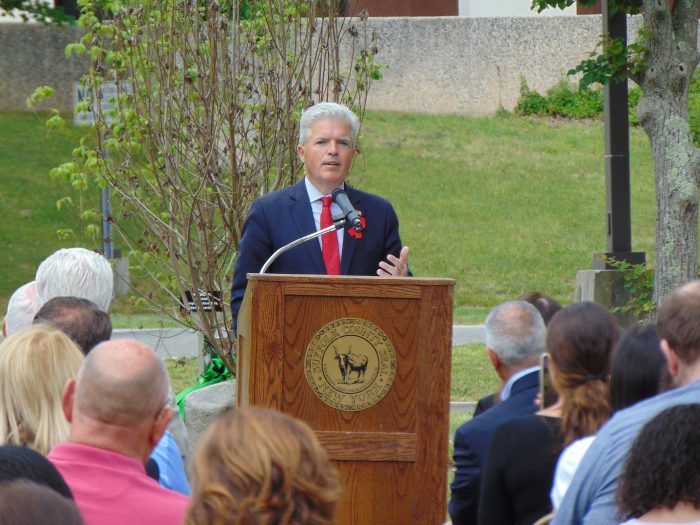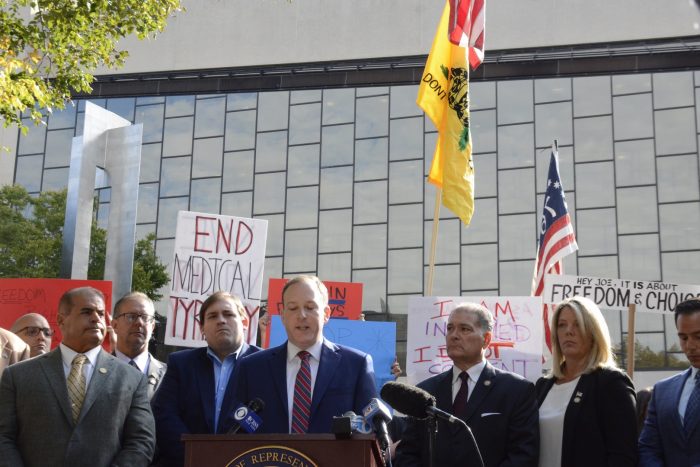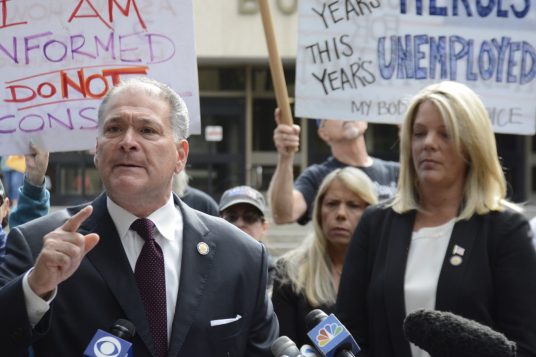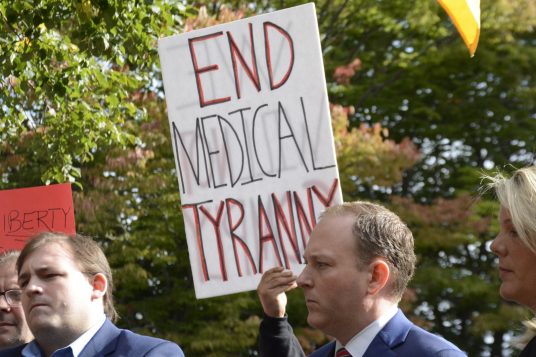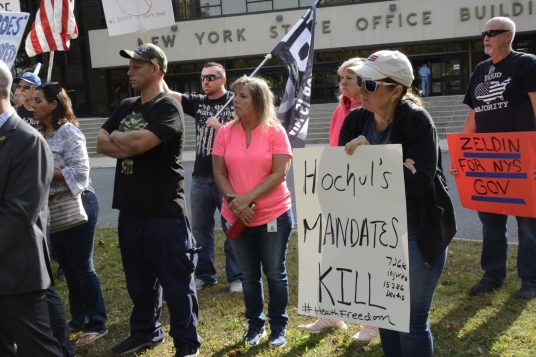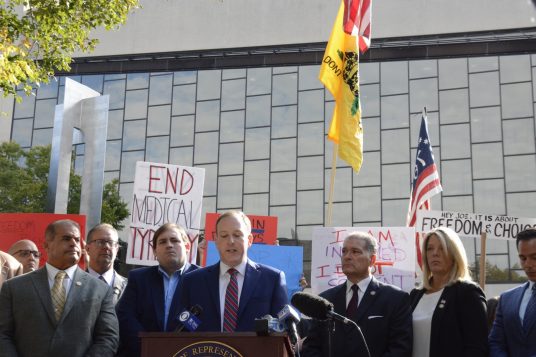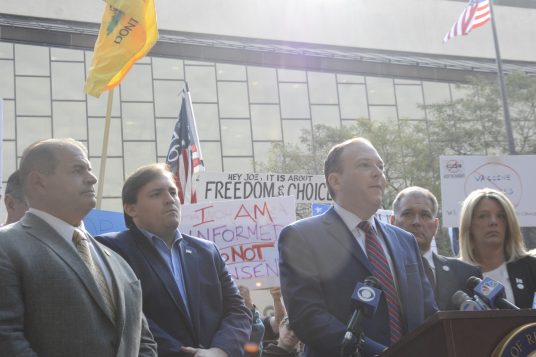Suffolk County Executive Steve Bellone released the 2022 Recommended Operating Budget that will allow the county to recover and reemerge stronger from the COVID-19 pandemic, and focuses on strategic investments in water quality infrastructure, public safety, small businesses and local downtowns to foster a strong economic recovery.
Additionally, the budget freezes General Fund property taxes and complies with the New York State 2% Property Tax Cap for the tenth year in a row.
Suffolk County will once again project an operating surplus in 2022 for the third year in a row. The total 2022 Recommended Budget is $3.88 billion.
“Even as we continue to battle the COVID-19 pandemic, this year’s recommended budget focuses on a strong recovery by making large-scale investments in water quality infrastructure, public safety, main street businesses and our county workforce,” Bellone said. “The budget does all this while remaining structurally balanced, protecting taxpayers at all costs and securing the county’s financial future.”
Highlights of the County Executive’s Recommended Budget include:
Water Quality Infrastructure Investments
Bellone has made Suffolk County a recognized leader statewide in efforts to protect and improve water quality.
Scientists have identified the lack of wastewater treatment as a significant threat to Long Island’s environment and economy.
For decades, cesspools and septic systems have discharged excess nitrogen pollution into the environment, culminating in recent years in beach closures, toxic algae and fish kills.
To stop and reverse nitrogen pollution from cesspools and septic systems, Bellone launched the Reclaim Our Water initiative, which includes connection to sewers in some areas, and the installation of Innovative Alternative Onsite Wastewater Treatment Systems where sewers are not a practical or cost-effective solution.
The Recommended Budget will invest $125 million in a Water Quality Infrastructure Program, funded by the American Rescue Plan.
The Main Street Recovery Program
Small and Main Street businesses were hit especially hard by the COVID-19 pandemic.
Many of them had to alter operations, invest in new technology, supplies, and tools to remain open, and some had to shutter their doors entirely. Businesses needed to be able to pivot in real-time to navigate these ongoing challenges.
Last year, to assist struggling businesses, Bellone launched the Suffolk County Business Recovery Unit, which has worked to address the concerns and questions of the business community during the pandemic.
The unit launched a number of initiatives, including but not limited to, a Small Business Grant Program, Business Recovery website with information and resources, Business Recovery call center, job board and in partnership with Stony Brook University College of Business, a technology assistance program, gift card program and Pandemic Shift workshops.
With challenges still lying ahead, this year’s Recommended Budget includes $35 million in funding for The Main Street Recovery Initiative, which will be funded by the American Rescue Plan.
The county’s Main Streets and downtowns are critical to the long-term economic success of this region. Suffolk’s economic development plan, Connect Long Island, is centered around this fact. Downtowns are the places to develop the kind of housing diversity that the region needs and that will support small businesses.
They are also the places to build a mix of uses that will ultimately reduce car trips and thus reduce traffic congestion. Downtowns are also the places to create the kind of vibrancy that is necessary to attract young people, innovators and entrepreneurs to the region.
These recovery funds will be used to invest in downtowns, invest in infrastructure and projects and in cultural arts institutions.
The Main Street Recovery Fund will help provide direct assistance to Small Businesses and rent relief to help businesses impacted by COVID-19 and to reduce vacancies in the region’s downtowns.
Public Safety
This budget makes public safety a priority. Police Academy classes, which will begin in January and September of 2022, will graduate approximately 220 new Suffolk County police officers.
The Budget also includes funding for a Deputy Sheriff’s class of approximately 30 officers, two Correction Officer classes in June and September of 2022 that will graduate approximately 110 new officers, and 20 new Probation Officers.
The budget also provides funding to implement Police Reform in the Police District and additional funding for east end police departments and other local departments. Part of that funding will pay for the implementation of Body Worn Cameras.
County Workforce
This year’s budget provides funding to staff departments to ensure superior delivery of county services and adds funding for 120 new positions, including new mechanics, nurses and public safety dispatchers. The budget also continues to fund positions that previously remained vacant due to the pandemic such as 66 various titles in the Department of Public Works.
The budget also includes funding for positions in Human Resources and Procurement to better support the county government’s most valuable resource, its workforce, and to save taxpayer dollars by centralizing operations to better coordinate and streamline purchasing processes.
Opioid Settlement Fund
Suffolk County was the first county in New York State to bring litigation against drug makers in connection with the opioid crisis. The county has since reached several multi-million dollar settlement agreements with three major opioid distributors, Amerisource Bergen Drug Corporation, Cardinal Health Inc., and McKesson Corporation, and major retail pharmacies including Walmart, CVS and Walgreens.
The 2022 Operating Budget creates a separate fund for the restricted and non-restricted opioid settlement funds for use in addressing the opioid epidemic. County Executive Bellone has convened an intra-agency committee with Presiding Officer Rob Calarco, who sponsored the initial legislation to commence litigation against the companies responsible for the Opioid epidemic.
The Committee is tasked with developing priorities related to the settlement agreements the county is receiving from Opioid distributors, manufacturers and pharmacies. The Committee has engaged with key stakeholders within the substance abuse community, including non-profit service providers with expert-level experience in harm reduction, prevention, treatment and recovery services.
Protecting Taxpayers
The 2022 budget, which freezes the County Tax for the 10th year in a row, also includes a number of additional financial measures designed to protect taxpayers in Suffolk County. The proposed budget takes an intensive approach to building reserves and contingency funds to safeguard future years’ finances. The County’s Tax Stabilization Reserve Fund is funded at the highest level in its history. Additional reserve funds including the Retirement Contribution Reserve Fund, the Debt Service Reserve Fund and Insurance Reserve Fund are also funded. This budget also creates several contingent funds to further stabilize the county’s long-term fiscal position.
The Budget includes contingencies for snow and ice removal and road repair costs, accrued liability from employee benefits, and most notably a contingent fund to pay every deferred employee salary ever implemented – including those instituted by prior administrations. This budget pays off previous debt from deferrals and pension amortization and from the sale/leaseback of the H Lee Dennison Building. These fiscally responsible actions will help deliver lower interest rates and eliminate the need for short term borrowings, both of which will ultimately save taxpayers tens of millions of dollars.
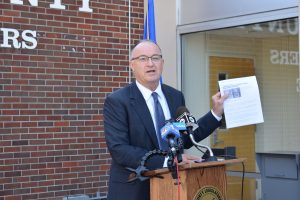


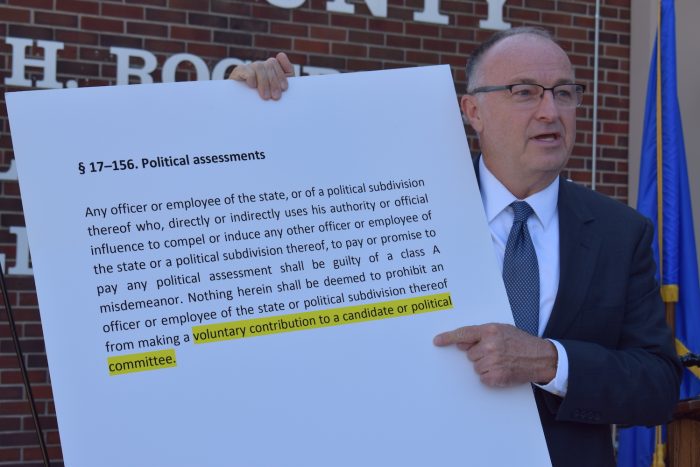





 Overall, the candidates confirmed their commitment to seeing a change in the way local government sees the people and, perhaps more introspectively, sees itself. Ferro said he’s more than used to working with electeds on both sides of the aisle. Schramm, as an openly gay man who lives with his life-partner Steve, said he would work toward a more inviting Huntington for everyone. “Our Town Hall needs to start having people provide sign language at Town Board meetings,” he said. “We need to include everybody in our community. We need to be a welcoming Town Hall.”
Overall, the candidates confirmed their commitment to seeing a change in the way local government sees the people and, perhaps more introspectively, sees itself. Ferro said he’s more than used to working with electeds on both sides of the aisle. Schramm, as an openly gay man who lives with his life-partner Steve, said he would work toward a more inviting Huntington for everyone. “Our Town Hall needs to start having people provide sign language at Town Board meetings,” he said. “We need to include everybody in our community. We need to be a welcoming Town Hall.”


